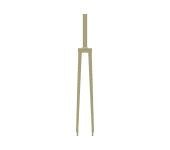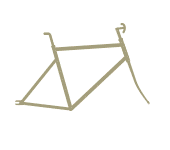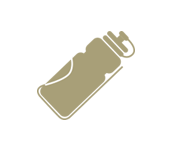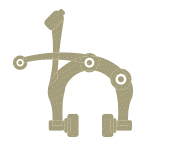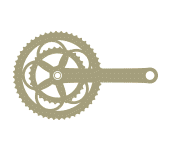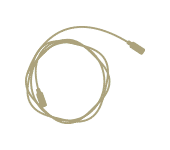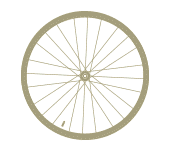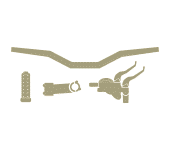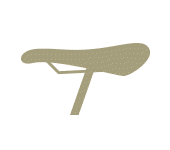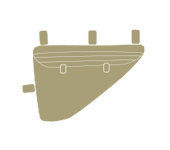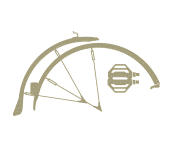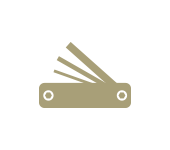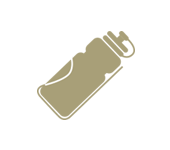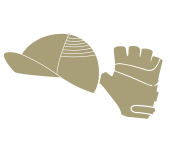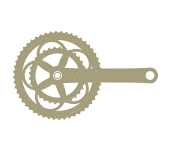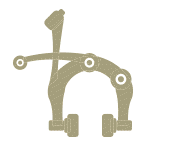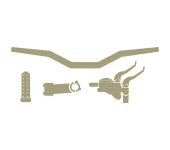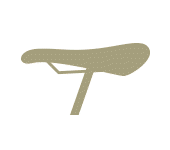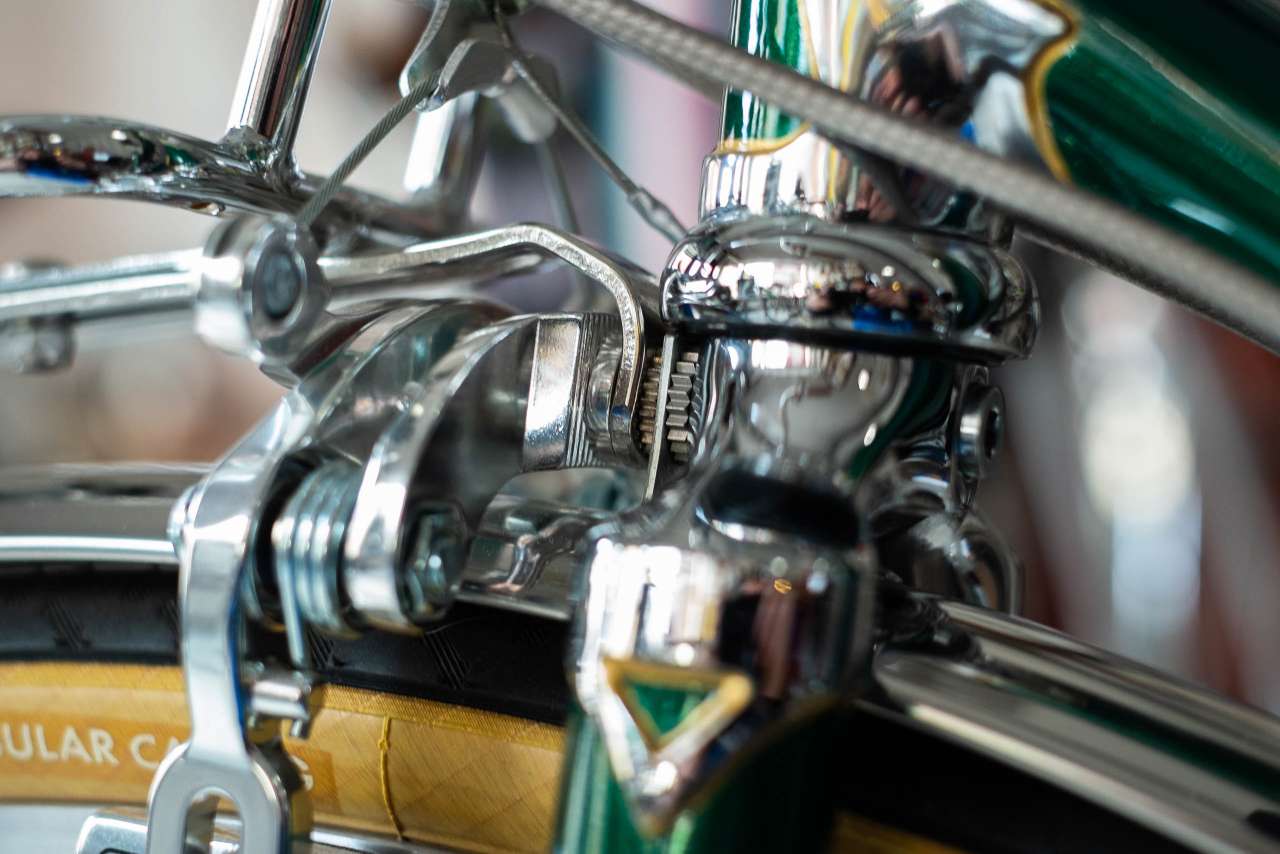Mounting instructions Mudguards
Part 1: Assembly of the mounting braces on the mudguards
Attach the struts to the front and rear mudguards with the supplied eyelet plates.
1. place the plate with the threads in the hole punchings from the inside to the two holes of the mudguard that are located one below the other and the stainless steel plate with the loop from the outside.
2. lightly screw two screws from the outside through the stainless steel sheet and the guard plate into the corresponding threads.
3. thread the strut through the loop of the stainless steel sheet.
4. tighten the bolts, but not completely yet.
STUDIO STAINLESS STEEL MUDGUARD 36 MM WITH CLIPS
Attach the struts to the front and rear mudguards using the strut clamps provided.
1. thread the strut through the hole of the strut clamp.
2. put the "washer" onto the thread with the hollow side facing the strut.
3. thread the bolt through the hole in the fender.
4. screw on the nut, but do not fully tighten it yet.
STUDIO STAINLESS STEEL MUDGUARD 42+48 MM WITH CLIPS
Attach the struts to the front and rear mudguards using the clips provided.
1. thread the strut through the loop of the clip.
2. put the small screw first through the holes of the clip and then through the hole of the mudguard.
3. screw on the matching nut, but do not fully tighten yet.
Part 2: Mounting the front wheel mudguards
MOUNTING THE MUDGUARD WITH A MUDGUARD ANGLE
1. Attach the fender bracket to the front fender with a 5mm bolt and nut. The nut should be on top so you can easily reach it with a wrench.
Note: Our Studio mudguards have the mudguard angle already mounted.
2. If your bike has brakes with nuts, loosen the brake nut and attach the fender bracket to the back of the fork with the brake bolt.
Note: on some frames, the fender will fit better if the angle is in front of the fork crown.
3. If your bike uses recessed brake bolt nuts, you can drill out the hole in the mudguard angle, use mudguard nuts, or mount the angle in front of the fork crown.
MOUNTING THE MUDGUARD IN THE FORK CROWN
Note: This mounting option only works with mudguards without pre-mounted mudguard angle e.g. from Honjo or Gilles Berthoud.
Some well-designed randonneur frames have a thread cut under the fork crown specifically for mudguard mounting.
1. Disassemble your front wheel.
2. Insert a 5mm bolt with washer through the hole in the front mudguard. The bolt head and washer should be inside the mudguard.
3. Place a Leather washer washer over the bolt on the outside of the fender. The leather washer absorbs vibration, cushions the fender and helps prevent cracks in the bolt hole.
4. Screw the mudguard to the bottom of the fork crown.
5. Since the crown of the fork is not perfectly tangent to the wheel on most bikes, you will need to align the mudguard with the wheel. Simply hold the fender on either side of the fork crown and apply a little pressure. This will create a small dent around the mounting bolt.
6. Replace the wheel and check the alignment.
7. If you are using small tires, you can get the fender further down by putting a couple of washers or Spacer stacking them on the bolt above the leather washer.
if there is no thread under the clevis, you can use the Honjo mudguard holder to fix the mudguard in the fork crown.
1. the mudguard holder is threaded over the brake bolt in the fork crown. Loosen the bolt on your front brake. If your bike has canti brakes or no front brake, use a 6mm bolt about 50mm long from the hardware store.
2. Hold the fender bracket in the fork crown and slide the brake bolt through the hole in the fender bracket.
3. Retighten the nut on the brake bolt so that the brake is reinstalled.
4. Place the large metal washer and then the leather washer over the threaded end of the brake.
5. Slide the fender onto the fender bracket.
6. Secure the fender with the smaller washer and nut. Do not over tighten the nut.
7. Since the crown of the fork is not perfectly tangent to the wheel on most bikes, you will need to align the mudguard with the wheel. Simply hold the fender on both sides of the fork crown and apply a little pressure. This will create a small dent around the mounting bolt.
8. Reattach the wheel and check the alignment.
Note: For some forks, such as carbon forks or forks with little space in the fork crown, the attachment of the front mudguard requires a Fender Bracket.
ATTACHING THE MOUNTING BRACES TO THE FORK
To fasten the struts to the fork eyelets you can Clips used. If your bike has two eyelets on each side, it is best to attach the mudguards to the rear eyelets and the rack to the front eyelets. Modern bikes have eyelets threaded for 5mm bolts, but some older European frames have different sizes or no eyelets at all; in these cases, get the proper nuts and bolts at your local hardware store.
Note: For mounting without fork eyelets are required appropriate Adapter plates required, which are threaded depending on the model on the axle or the quick release and fastened together with the wheel. The holes in the adapter plates then act as mounting eyelets.
1. Place the Clips on the struts and bolt them to the eyelets on the front dropouts with 5mm bolts. Place a washer underneath but do not tighten the bolts yet.
2. Adjust the braces so that the distance to the mudguard is nice and even by sliding them back and forth in the clips. Also check that the mudguard is centered over the tire. The struts are extra long and need to be cut to the correct length. Mark the struts with a felt tip pen.
3. Unscrew the Clips off and cut the struts to length with a hacksaw or large bolt cutter. It is a good idea to file down the ends so they are not as sharp.
4. Now tighten all the screws, including the ones on the mudguard.
Part 3: Mounting the rear mudguard
MOUNTING THE REAR MUDGUARD TO THE CHAIN STAY BRIDGE
On some high-quality Randonneur frames, there is a thread from below in the brake bridge and in the chainstay bridge, especially for mounting the mudguard. Other frames have a hole there without a thread and require a bolt and nut.
1. Remove the rear wheel.
2. Check if there is enough space at the chainstay bridge to mount the mudguard. The mudguards usually need to be bent a bit to fit.
3. Attach the front part of the mudguard to the chainstay bridge. If there is a thread, simply screw in a 5mm bolt. Use a leather washer between the fender and the bridge and a metal washer inside the fender.
4. If the hole in the chainstay bridge is unthreaded, attach the fender with a bolt and nut. Use a leather washer between the fender and bridge and a metal washer inside the fender.
Note: Some frames have no hole in the chainstay bridge at all, then the mudguards can be mounted with the Honjo Hooked Band can be attached.
ATTACHING THE MUDGUARD TO THE BRAKE BRIDGE
As with the chainstay bridge, some bikes have threads under the brake bar for mounting. On other bikes, you will need to use a Sliding bridge or use a Mudguard bracket use a thread.
Note: Our Studio Mudguards have the mudguard bracket already pre-mounted.
1. If your frame is threaded under the seat stay, you will need to drill a hole in the fender for the mounting bolt. (This hole cannot be pre-drilled at the factory as its position varies depending on frame size and model). Mark the position of the hole by holding the mudguard against the base. Make a small indentation with a center punch or sharp nail. Drill the hole with a 5mm drill bit.
2. Attach the mudguard with a 5mm bolt. Use a Leather washer washer between the mudguard and the bridge and a metal washer inside the mudguard.
ATTACHING THE MUDGUARD TO THE BRAKE PEDESTAL WITH A BRACKET
If your bike does not have a thread at the bottom of the brake bridge, use the Sliding bridge or a Mudguard bracketwasher to secure the mudguard.
Note: Our Studio mudguards have the mudguard bracket or bridge already pre-assembled.
1.Hold the mudguard against the brake web to determine the position of the Sliding bridge position. Fold the arms of the bridge under the mudguard. Check the alignment. Squeeze the bracket arms tightly with pliers.
Note: You can use a Mudguard angle instead; see above (mounting the mudguard with a mudguard bracket).
2. Attach the bridge to the brake bolt. If you have cantilever brakes, just get a matching bolt and nut at your local hardware or home improvement store.
3. Some bikes don't have a hole in the brake bridge at all. In this case, you can use a clamp to secure the push bar around the brake web.
ATTACHING THE MOUNTING BRACES TO THE DROPOUTS
1. Attach the struts to the eyelets on the dropouts, as you did with the front mudguard.
2. Shorten the struts to the correct length.
3. Check that all bolts, nuts and studs are tight.
Note: For mounting without eyelets on the dropouts, corresponding Adapter plates are required, which, depending on the model, are threaded onto the axle or quick release and attached together with the wheel. The holes in the adapter plates then act as mounting eyelets.

